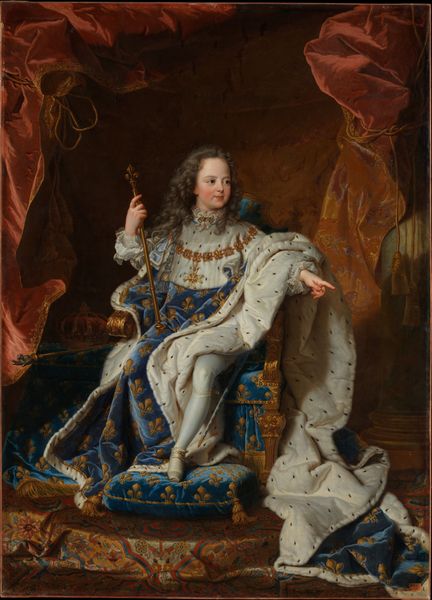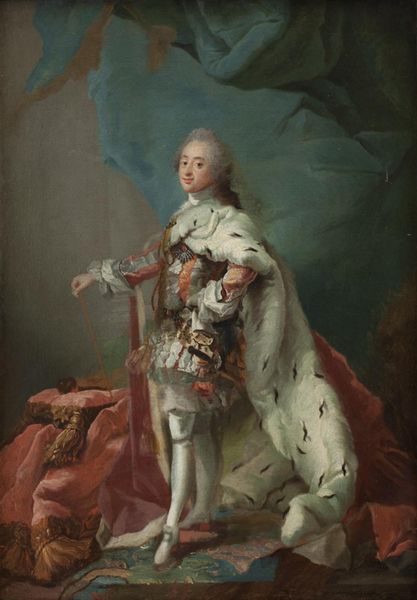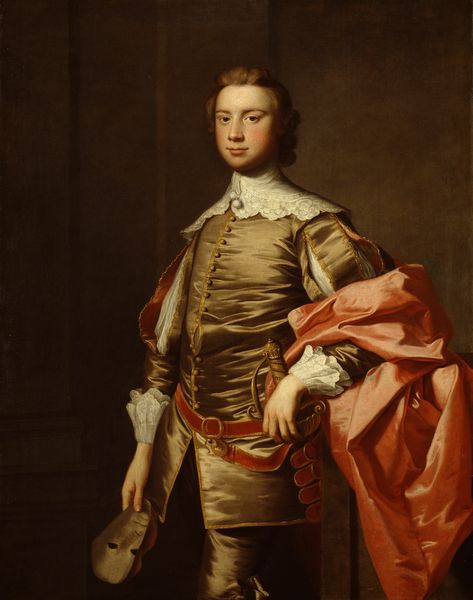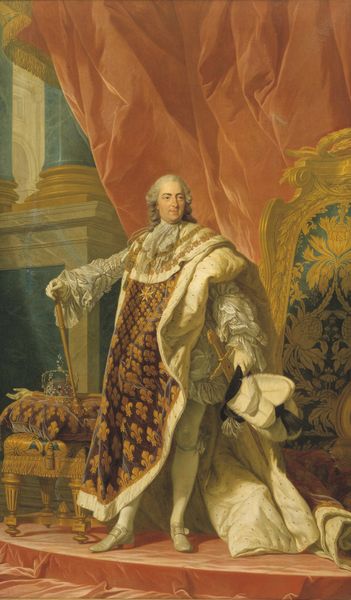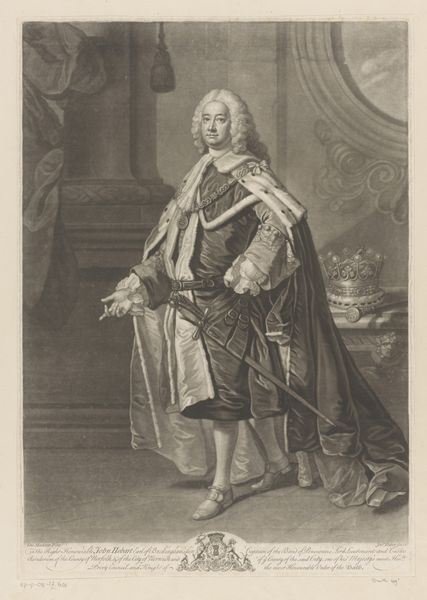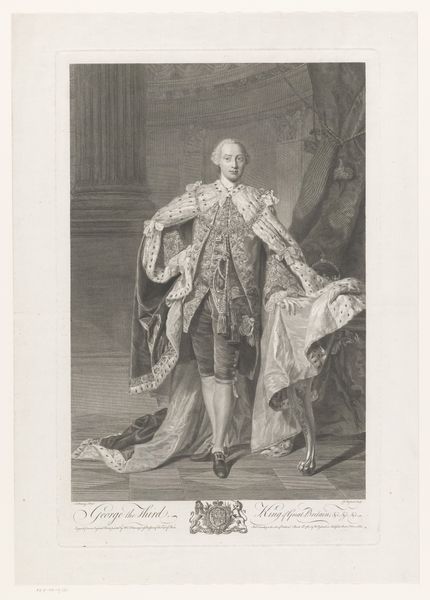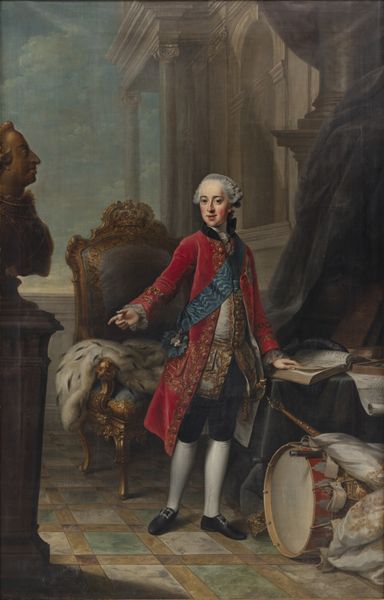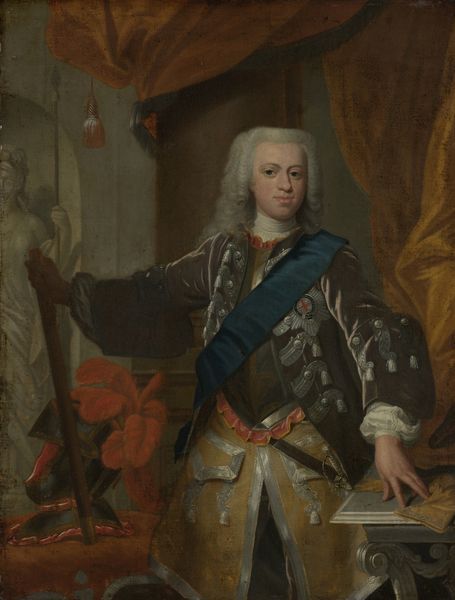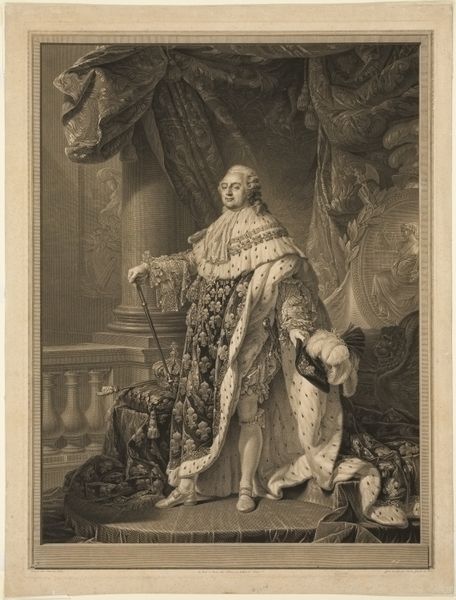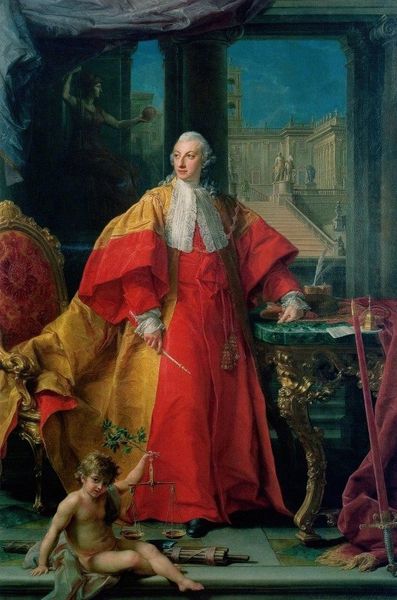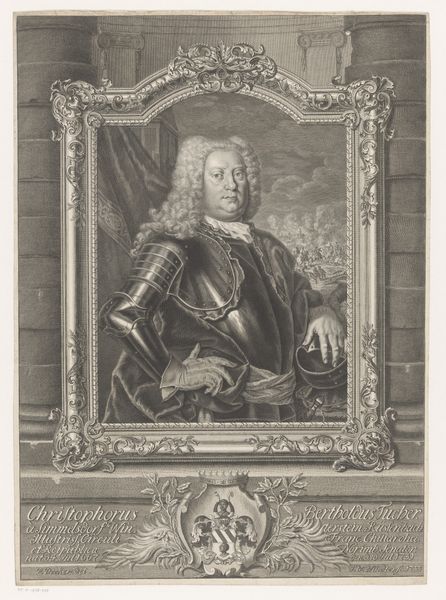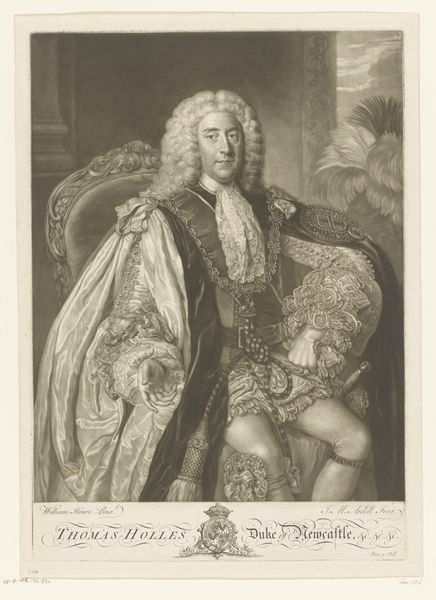
Dimensions: 281.8 cm (height) x 169.6 cm (width) (Netto)
Curator: Allan Ramsay painted this full-length portrait of George III between 1765 and 1766. It’s an oil on canvas and resides here at the SMK, Statens Museum for Kunst. Editor: He looks so…small. The weight of the ermine robe, the heavy drape behind him—they seem to visually diminish his presence. There is this undeniable sense of vulnerability that cuts through the expected bravado. Curator: Note how Ramsay balances the Rococo predilections with a budding Neoclassical sensibility. Observe the stately column; its form alludes to stability and empire, but notice also the light; the sharp, even illumination flattens the details, rendering the composition in a surprisingly straightforward, rather than theatrical, mode. Editor: Straightforward for the king perhaps, but let’s consider the political tensions embedded in this regal presentation. England was deep in debt after the Seven Years' War, and resentment was brewing in the colonies, fomented in no small part by his policies. Ramsay's effort to portray steadfast rule here feels like an act of narrative control. Curator: Perhaps, but the application of pigment here also denotes control. The smoothness of the surfaces, particularly in the face and hands, denotes technical skill—a command over the materiality. Note, too, the recurring motif of the ellipse. It echoes in the patterns of the ermine, his buckles, and buttons creating rhythm that carries the eye across the composition, providing structure. Editor: But to whose benefit? Such repetition reinforces a sense of hierarchical structure—George III stands as the focal point of colonial subjugation, with the systematic arrangement serving as visual confirmation of entrenched power imbalances, suppressing dissent. Curator: And yet, Ramsay humanizes the king to a degree uncommon in state portraiture of the time. There's a subtle awkwardness to his posture and stance and the lightness in his eyes suggests, perhaps, a trace of insecurity. The composition as a whole doesn’t flatten to an image of strict perfection. Editor: Perhaps. Still, the piece ultimately serves to legitimize and solidify the king's position at a time of significant socio-political unrest. For all its nuance, its historical weight bears consideration, I think. Curator: I concede that its significance goes beyond merely representational conventions and symbolic meanings—which speaks, in itself, to Ramsay’s enduring talent. Editor: Indeed. Seeing it today makes me think about which visual codes and contexts continue to influence contemporary perception of leaders and authority.
Comments
No comments
Be the first to comment and join the conversation on the ultimate creative platform.
